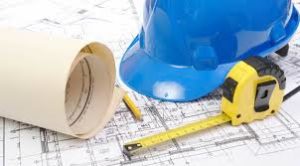Protecting your Neighbours Property is not something you might consider when extending or building your dream home. When an owner of a property proposes to construct a new dwelling on their land or proposes to demolish or partially demolish a dwelling on their land, followed by the construction of a new dwelling or extension to an existing dwelling, the adjoining property owner may feel anxious about the building works. Anxiety is heightened if the building works are close to the common boundaries between the properties. To protect adjoining owners and their property in this situation, the Building Act 1993 (“Act”) outlines obligations on the owner.
How do I know if Protection Work is Required?
Before commencing any building works, the agent for the owner (i.e., builder) or the owner of the land, must apply for a building permit from the relevant authority. This application requires detailed information to be provided about the building works. The relevant building surveyor will review the information contained in the building permit application and decide on whether protection work is required.
 Notice of Protection Work
Notice of Protection Work
If protection work is required, the owner must give the owner of the adjoining property notice of the proposed building works. The adjoining property owner has 14 days after the notice is served to respond. The adjoining owner can agree or disagree to the proposed protection works or require further information. However, if the adjoining owner fails to respond in time, they are deemed to have agreed to the proposed protection work.
If the adjoining owner disagrees with the proposed protection work or requests further information, the building surveyor must examine the proposal and determine whether the proposed protection work is appropriate. The building surveyor must give the owner and the adjoining owner notice in writing of his or her determination.
A property owner or the adjoining owner may appeal within 14 days to the Building Appeals Board, against the determination of the building surveyor.
If the adjoining owner agrees or is deemed to have agreed to the proposed protection work, the owner may proceed to carry out the protection work after obtaining any necessary permits or approvals from the relevant authority.
Owners Obligations
Under the Act the Owner:
- must have insurance cover in place for damage caused by the proposed protection work, and
- must arrange for a condition report of the neighbour’s property to be carried.
The insurance policy must protect the adjoining property, occupiers and the general public during the building works and must cover a period of 12 months following completion of the work. The policy must be with an insurer for an amount agreed between the owner and adjoining owner. However, if dispute arises about the level of insurance coverage, the Building Appeals Board can make a determination.
A copy of the insurance policy must be provided to the adjoining owner before building work commences.
A condition report of the adjoining property must be prepared by the owner in conjunction with the adjoining owner. The condition report must be a record of all existing cracks and defects in the adjoining property. The report must be signed or acknowledged as an agreed record of the condition of the adjoining property before the commencement of any protection work.
Disputes in relation to the adequacy of the condition report can be referred to the Building Appeals Board for determination.
Costs and Expense
The owner is required to pay the costs and expenses incurred by the adjoining owner in protecting their interests. These costs and expenses include specialists’ fees to check protection work documentation and expenses relating to the supervision of the protection work.
Conclusion
Protective works can severely delay the commencement date for building works and add additional cost to the construction. An owner should be aware of the protective work requirements if the building works is to the common boundary between the property.
For further information on protective works, please contact us at info@centralhighlandsconveyancing.com.au or on 5303 0281 to make an appointment.
The information on this website is of a general nature only. It is not, nor is it intended to be legal advice. You should consult a lawyer for individual advice about your particular circumstances.
Liability limited by a scheme approved under Professional Standards Legislation.
Click here to go back to Publications.
